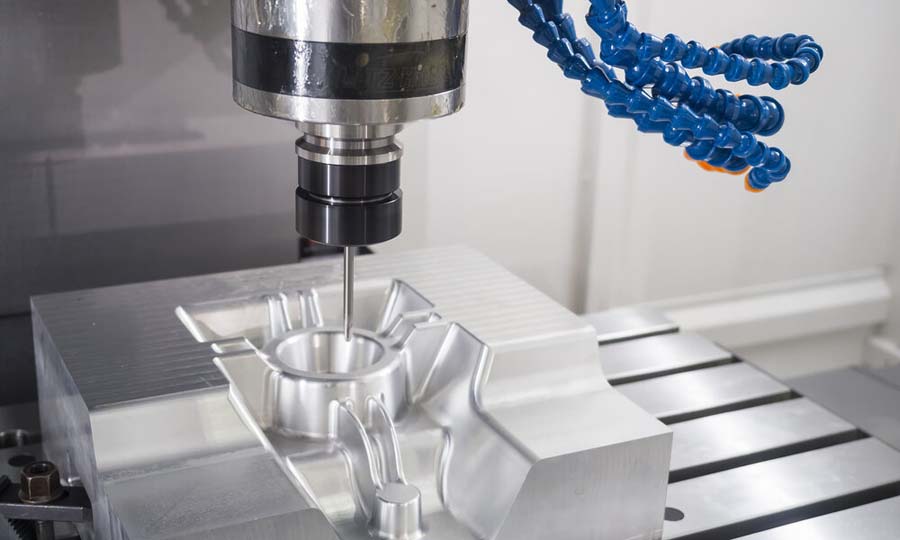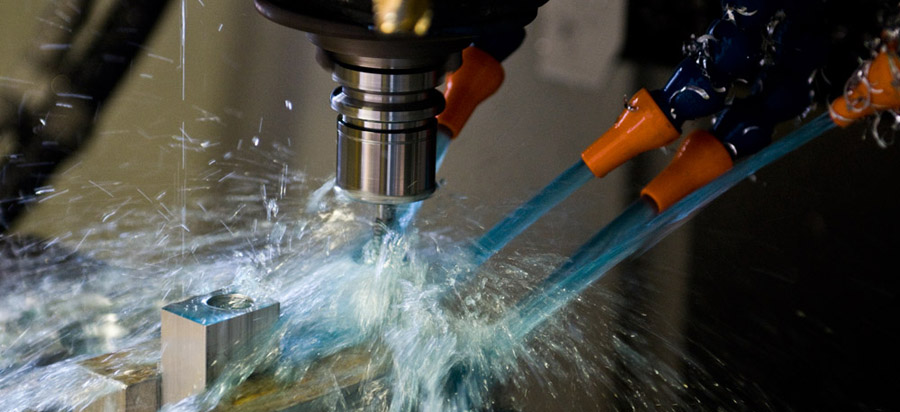Machining error refers to the degree of deviation between the actual geometric parameters (geometric size, geometric shape and mutual position) of the parts after machining and the ideal geometric parameters. The degree of agreement between the actual geometric parameters and the ideal geometric parameters of the part after machining is the machining accuracy. The smaller the machining error, the higher the degree of conformity, and the higher the machining accuracy. Machining accuracy and machining error are two formulations of the same problem. Therefore, the size of the machining error reflects the level of machining accuracy.
1. Manufacturing Errors Of Machine tools
The manufacturing errors of machine tools mainly include spindle rotation error, guide rail error and transmission chain error.
Spindle rotation error refers to the variation of the actual rotation axis of the spindle relative to its average rotation axis at each moment, which will directly affect the accuracy of the processed workpiece. The main reasons for the spindle rotation error are the spindle coaxiality error, the bearing itself error, the coaxiality error between the bearings, and the spindle winding. The guide rail is the benchmark for determining the relative positional relationship of various machine tool components on the machine tool, and it is also the benchmark for machine tool movement. The manufacturing error of the guide rail itself, the uneven wear of the guide rail and the installation quality are important factors that cause the guide rail error. Transmission chain error refers to the error of the relative movement between the transmission elements at both ends of the transmission chain. It is caused by the manufacturing and assembly errors of each component of the transmission chain, as well as the wear during use.
2. The Geometric Error Of The Tool
Any tool will inevitably wear out during the cutting process, which will cause the size and shape of the workpiece to change. The influence of tool geometry error on machining error varies with the type of tool: when using fixed-size tools for machining, the tool manufacturing error will directly affect the machining accuracy of the workpiece; and for general tools (such as turning tools, etc.), the manufacturing error There is no direct influence on machining errors.

3. The Geometric Error Of The Fixture
The function of the fixture is to make the workpiece equivalent to the tool and the machine tool have the correct position, so the geometric error of the fixture has a great influence on the machining error (especially the position error).
4. Positioning Error
Positioning errors mainly include fiducial misalignment errors and positioning pair manufacturing inaccuracy errors. When processing the workpiece on the machine tool, several geometric elements on the workpiece must be selected as the positioning datum during processing. If the positioning datum and the design datum are selected (the datum used to determine a certain surface size and position on the part drawing) ) Does not coincide, it will produce benchmark misalignment error.
The workpiece positioning surface and the fixture positioning element together constitute a positioning pair. The maximum position change of the workpiece caused by the inaccurate manufacturing of the positioning pair and the matching gap between the positioning pairs is called the inaccurate manufacturing error of the positioning pair. The inaccurate manufacturing error of the positioning pair can only occur when the adjustment method is used, and it will not occur in the trial cutting method.
5. Errors Caused By Force And Deformation Of The Process System
Workpiece rigidity: In the process system, if the rigidity of the workpiece is relatively low relative to the machine tool, cutting tool, and fixture, under the action of cutting force, the deformation of the workpiece due to insufficient rigidity will have a greater impact on machining errors.
Tool rigidity: The rigidity of the external turning tool in the normal (y) direction of the machined surface is very large, and its deformation can be ignored. Boring an inner hole with a small diameter, the rigidity of the tool bar is very poor, and the force and deformation of the tool bar have a great influence on the machining accuracy of the hole.
Machine tool component stiffness: The machine tool component is composed of many parts. So far, there is no suitable simple calculation method for the stiffness of machine tool components. At present, experimental methods are mainly used to determine the stiffness of machine tool components. The factors that affect the rigidity of machine tool components include the influence of the contact deformation of the joint surface, the influence of friction, the influence of low-rigidity parts, and the influence of clearance.

6. Errors Caused By Thermal Deformation Of The Process System
The thermal deformation of the process system has a relatively large impact on the machining error, especially in the precision machining and large parts processing, the machining error caused by the thermal deformation can sometimes account for 50% of the total error of the workpiece.
7. Adjustment Error
In each process of machining, the process system must be adjusted in one way or another. Since the adjustment cannot be absolutely accurate, an adjustment error occurs. In the process system, the mutual position accuracy of the workpiece and the tool on the machine tool is ensured by adjusting the machine tool, tool, fixture or workpiece. When the original accuracy of machine tools, tools, fixtures and workpiece blanks all meet the process requirements without considering dynamic factors, the adjustment error plays a decisive role in the machining error.
8. Measurement Error
When measuring parts during processing or after processing, the measurement accuracy is directly affected by the measurement method, the accuracy of the measuring tool, the workpiece, and the subjective and objective factors.
9. Internal Stress
The stress that exists inside the part without external force is called internal stress. Once internal stress is generated on the workpiece, the workpiece metal will be in a high-energy unstable state, which instinctively transforms to a low-energy stable state, and accompanied by deformation, so that the workpiece loses its original machining accuracy.


